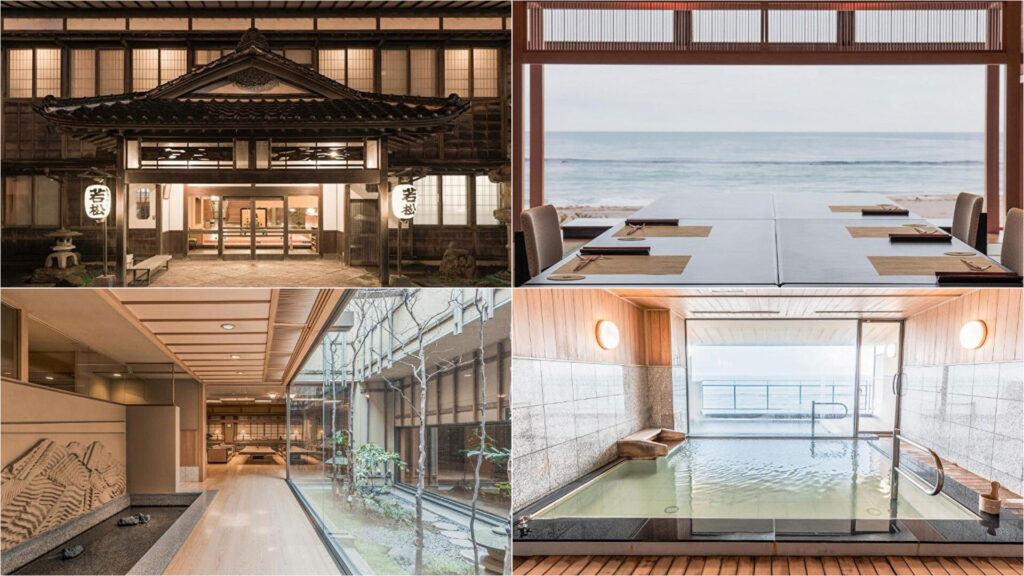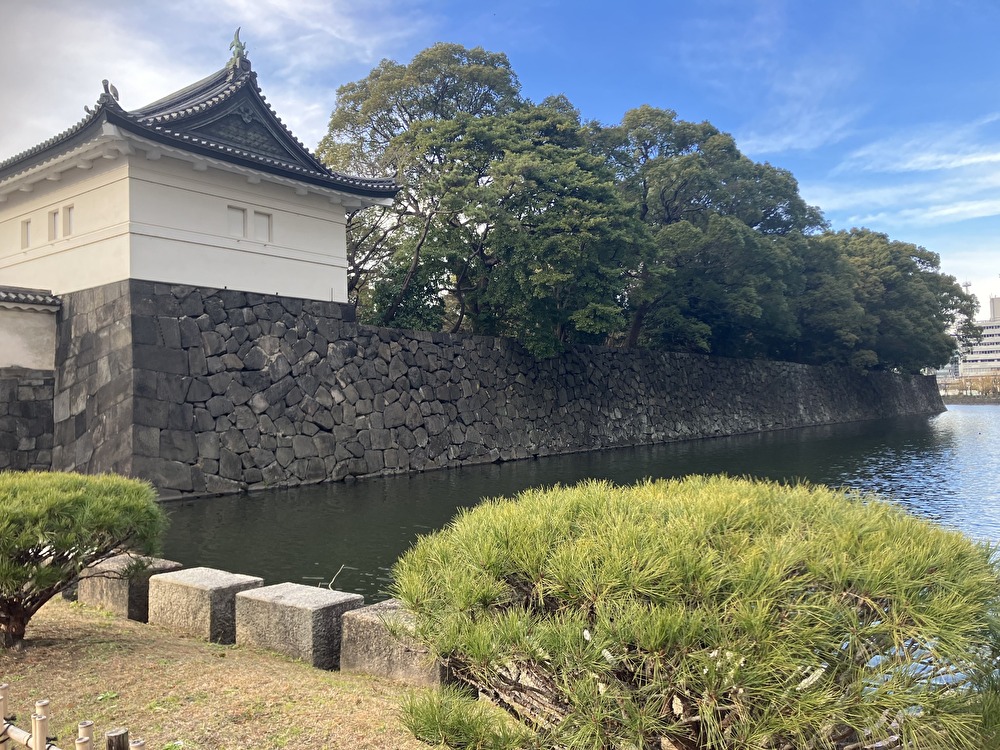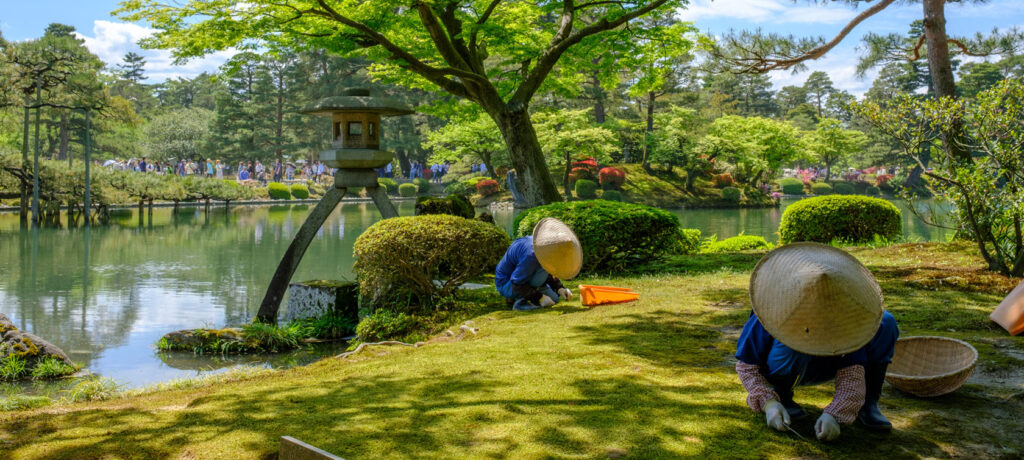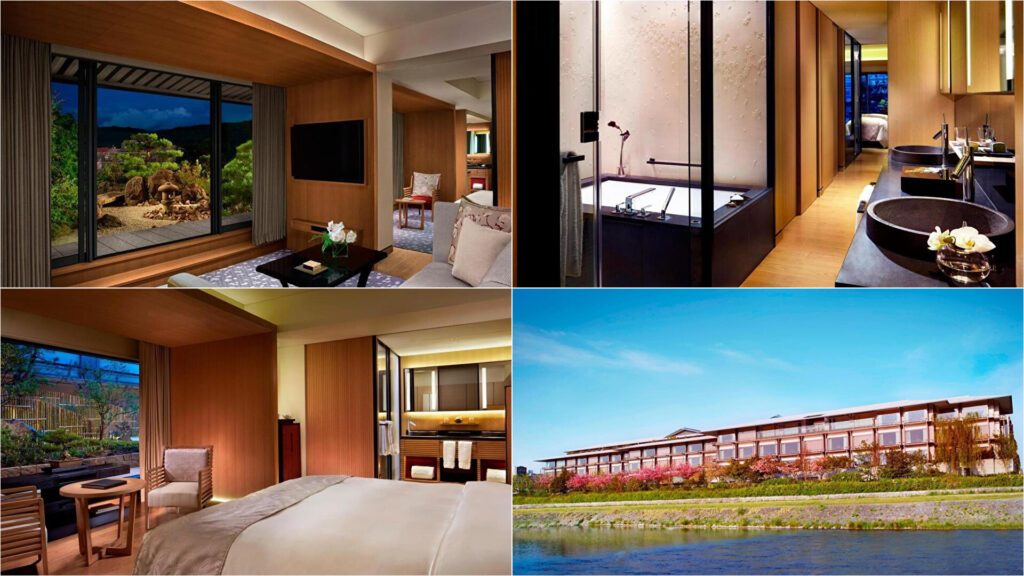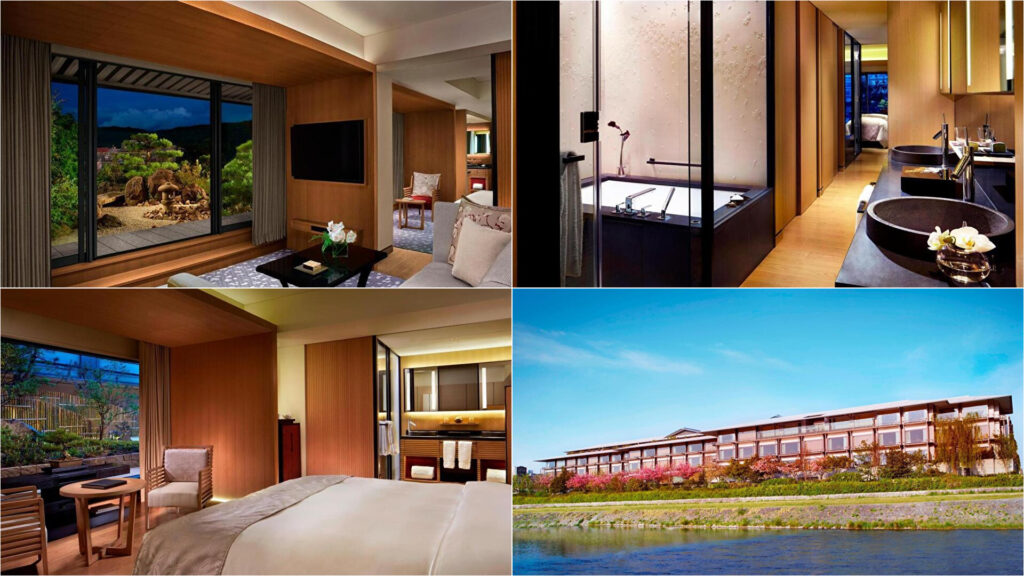An intriguing blend of modern and ancient, efficient and eclectic, rural and urban, Japan offers unique activities and experiences which can be specially tailored according to the composition of your family.
Overview
An intriguing blend of modern and ancient, popular and eclectic, rural and urban, Japan is a destination the whole family can enjoy; and on this fascinating journey there are unique activities that can be specially tailored to the composition of your family. Seek out vibrant markets overflowing with traditional crafts and curious knickknacks, and sweet and savoury street food. Be amazed by inspiring and thought-provoking digital art installations and world-famous open-air sculptures. Absorb Japanese pop culture, manga, cosplay, and anime film production. Take part in the uniquely Japanese traditions of sumo, samurai and geisha, and marvel at the rare swordsmanship practiced by ninjas. Learn all there is to know about sake and sushi and the great Japanese ritual of the tea ceremony. This journey through Japan will simply leave you amazed.
Journey Highlights
- Absorb Japanese pop culture and anime film production at two Tokyo institutions
- Learn the intricacies and cultural significance of sushi in a hands-on demonstration
- Explore the temples and traditions of old Japan in beautiful Kyoto
- Choose Design Your Day elements to suit the interests and age of every family member
- Pedal your way around Kyoto taking in the Golden Pavilion and the bamboo of Arashiyama
- Try out some sumo moves under the supervision of a master wrestler
Itinerary
Day 1: Tokyo
Arrive at the Japanese capital to a warm A&K welcome and transfer to your hotel. With a population of 38.1 million, Tokyo is a dazzling fusion of ancient and modern, traditional and avant-garde, and offers a myriad of activities that draw on the city’s fascinating history, innovative technology, exciting art and design, and charming people. Settle into your luxury hotel, with the rest of the day at leisure.
Conrad Tokyo
Day 2: Tokyo
Your introduction to Tokyo starts at Tsukiji Outer Market. Once the world’s largest fish auction house and market, it was relocated in 2018. Meander through the captivating collection of stalls selling some of the city’s freshest seafood, dried produce and seasoning, and all manner of kitchen utensils.
A hands-on private sushi making class has been organised for you in the company of a master sushi chef. Admire the skill of making these gastronomic treasures and learn about sushi’s cultural significance. Your master instructor will guide you through the rice preparation, the importance of the different toppings used and the correct rolling techniques. You will then sit down to savour the flavour of your culinary labours!
This afternoon, take a step back in time at Senso-ji, the oldest and most impressive Buddhist temple in Tokyo, built in 645. Wander through nearby Nakamise-dori, one of the oldest shopping arcades in Japan lined with about 90 shops selling crafts, mementos and plenty of sweet and savoury snacks — a wonderful place to explore.
End the day in the busy streets of Akihabara, ground zero for Japanese die-hard fans of pop culture and electronics. Weaving your way through crowds of shoppers and sky-high stores festooned with colourful advertising and neon lights, you may be reminded of the movie Pokémon: Detective Pikachu.
This evening, your local guide will join you for dinner (payable locally) at an eatery of your choice. Recommends MoonFlower Sagaya Ginza (Art by TeamLab), an intimate eight-seat establishment offering a perfect fusion of food and art.
Conrad Tokyo
Day 3: Tokyo
Take an extraordinary art immersion at teamLab Planets TOKYO, an endlessly Instagrammable, sumptuous, and surreal collection of installations dedicated to multi-sensory digital art. Dubbed ‘body-immersive’, the seven large-scale artworks are connected by maze-like, dark corridors that lead to wide-open, dazzling spaces. Discover the aquatic installation, where you can enter barefoot and splash through water up to your ankles. You’ll also visit the National Museum of Emerging Science and Innovation, or Miraikan, where you can expect to be wowed by a real-time display of seismometers showing the country gently vibrating. Asimo, the Honda robot, is one of the star attractions, as is a model maglev train.
After lunch there are touring options depending on the interests of your family group.
A visit to the one-of-a-kind Ghibli Museum comes highly recommended for those with an interest in cartoon animation. Located in the Mitaka Inokashira Park in Tokyo, this fantastic and whimsical museum is dedicated to the legendary Studio Ghibli film studio (often called ‘Japan’s Disney’) and exhibits the process of making anime.
Gain unique insight to the ninja culture in a captivating hour-long private class introducing the mysterious ways of the black-robed agents of espionage, from ancient Japan. Led by a master instructor, learn the basic movements and sword training associated with this uniquely Japanese tradition.
Older family members may enjoy a different afternoon, starting with a visit to the Meiji Jingu Shrine which was built to honour the deified spirits of the Meiji emperor (1868–1912). Set within a forest covering more than 70 hectares, the shrine now has more than 120,000 trees representing 365 different species.
Continue, on foot, to Harajuku — a popular area for teens who gather on weekends to dress up in striking cosplay costumes. Crossing a street brings you into the Omotesando area, one of Tokyo’s most fashionable districts. Elegant tree-line boulevards and international designer boutiques have earned the area the nickname, Japan’s Champs-Élysées.
This evening, visit the pulsing heart of Shinjuku, Tokyo’s night-time capital. Make a beeline for Kabukicho, a once notorious red-light district that today welcomes all. With an appetite for both food and fun, relish an authentic meal at an izakaya (payable locally), an eatery-cum-pub popular with the after-work crowd. Follow your guide through dimly lit back alleys to Golden Gai, a cluster of closet-sized beer joints, whiskey bars, clubs and cafés in what was originally a post-WWII black market. Spend the rest of the evening relaxing in one or more of the 280 establishments here. The first two drinks are on your guide!
Conrad Tokyo | Meals: B
Day 4: Tokyo
Your immersion in the world of anime continues at Suginami Animation Museum. With an English-language audio tour as your guide, trace the roots of anime, from the first crude animation techniques through to Speed Racer and the films of today. Hands-on activities include creating your own parapara manga flipbook.
Next, take part in a private masterclass of samurai traditions led by a master swordsman. The saburau (samurai) tradition dates back some 1,000 years and was forged from a strict regime of discipline and training in martial arts and swords, an integral part of the samurai tradition. This interactive session will provide an engaging introduction to the secret world of Japan’s ancient warrior class.
This afternoon, again choose touring options depending on the interests of your family group.
For more of Japan’s best-loved anime characters, head to the Pokémon Centre. Yellow and furry Pikachu takes centre stage here but there is a lot to see and a lot to buy, including Pokémon cutlery, sweets and stationery. Look out for the ceiling-high Dragonite.
Wander through Ueno Park which, in cherry blossom season, is Tokyo’s most popular spot for outdoor Hanami (flower viewing) parties. Nearby, the Ueno Zoo, Japan’s oldest, has achieved legendary status in the country for its giant pandas and successful breeding program. Visit the new enclosure which has been landscaped to echo the animals’ native mountain habitat, and meet Shin Shin and Ri Ri, whose cub Xiang Xiang was born three years ago.
Older travellers will be drawn to the Shibuya district, one of the main hubs of modern Tokyo, a vibrant district of shopping, dining and drinking. You may recognise its massive pedestrian crossing which is a regular feature in films, television shows and news footage. Venture to a special venue to sample some of Japan’s finest sake and explore the neighbourhood. Choose from hundreds of brands selected from 41 breweries throughout the country and, under the discerning eye of on-site experts, learn to differentiate between the many styles and regional characteristics. Your tasting includes a couple of cups of sake and some traditional snacks.
Later, head to the Roppongi Hills, Tokyo’s largest urban redevelopment project. Spend time browsing the many elegant boutiques here before making your way to the 238-metre-high Mori Tower, which stands in the centre of this mini city. The cultural jewel in the crown of this skyscraper is the Mori Art Museum, which occupies the 52nd and 53rd floors. The museum has no permanent collection, so anticipate an eclectic fusion of contemporary Asian art, research projects and public programs. End your visit gazing out over the city from the Sky Deck.
Conrad Tokyo
Day 5: Tokyo – Hakone
Travel overland with your guide to Hakone stopping in Kamakura en route to visit the Great Buddha, an iconic bronze statue located in the grounds of the Kotokuin Temple. The 13.35-metre-high Buddha is the second largest statue in Japan and one of the few standing in the open air.
After lunch, travel across town to Tsurugaoka-Hachimangu, the centrepiece of Kamakura and one of the most important shrines in Japan. The shrine stands at the end of Komachidori, a busy 600-metre-long pedestrian walkway lined with boutiques and gift shops, plus eateries and sweet vendors. Spend some time in the shrine’s large, landscaped grounds, where you find a lotus pond, dancing platform and the main shrine building. Cross the arched bridge to enter the main hall, once the centre of politics and culture in old Japan.
Leave Tsurugaoka-Hachimangu and wade back into Komachidori. Feast your eyes on the tasty street snacks and spend time browsing the shops for a special memento of this fascinating city.
Continue to your hotel in Hakone, where you’ll have the option of immersing yourself in the local culture with a traditional Japanese ryokan-style room.
Part of the Fuji-Hakone-Izu National Park, Hakone is celebrated for its hot springs, magnificent natural beauty and a wealth of outdoor activities. It is also the single best place to view Mount Fuji in all its majestic wonder. Among the many sights is the Hakone Open-Air Museum, one of the world’s finest outdoor sculpture gardens. Visitors will also enjoy the wonderful onsen (hot springs) culture.
Hyatt Regency Hakone Hotel & Spa
Day 6: Hakone
Your exploration of Hakone begins at the world-famous Hakone Open Air Museum which was opened in 1969 and is the first museum of its kind in Japan. Set on acres of manicured lawns and gardens the collection includes 1,000 sculptures done by some of the world’s most acclaimed sculptors. These include pieces by Henry Moore, Constantin Brâncuși, Barbara Hepworth, Rokuzan Ogiwara and Kōtarō Takamura. The museum also includes five indoor exhibition galleries including the Picasso Pavilion which exhibits 700 items (sketches, prints, drawings) of his work making this one of the largest holdings of Picasso’s art in Asia.
Then glide over the lush foothills of Hakone Mountains on the Hakone Ropeway crossing Owakudani, a deep trench pockmarked with sulfur vents steaming with volcanic activity. Return by ropeway to Lake Ashi, a picturesque crater lake formed 3,000 years ago. The lake lies at 720 metres above sea level. Enjoy a boat cruise across the lake admiring the lush surrounding mountain scenery.
The afternoon is at leisure to enjoy an onsen.
Hyatt Regency Hakone Hotel & Spa
Day 7: Hakone – Kyoto
Enjoy private transfer to Odawara train station for the bullet train to Kyoto.
If Tokyo looks toward the future, then Kyoto is the heart of historic Japan, a city steeped in imperial heritage and deeply rooted in ancient Japanese tradition. Serving as the capital of imperial Japan from 794 to 1868 it is famous for its cultural treasures: temples, gardens, shrines, and the intangible philosophy of an ancient way of life.
Your touring of Kyoto begins this afternoon at Kiyomizu temple. Head to the temple’s lofty veranda for marvellous views of Kyoto. Note that both the main hall and the veranda were built without the use of nails or joiners. Your next stop is the fascinating Higashiyama district, a series of busy lanes just off Kiyomizu that retain a distinct old-world charm. Browse the stores selling local specialties such as Kiyomizu-yaki pottery, sweets, pickles and crafts.
Later, take part in the ancient rite of the ‘Chado’ or tea ceremony. You will first be fitted and properly dressed in a traditional kimono, the national costume of Japan. Next you’ll be led by a tea master in the traditions of the tea ceremony, a Japanese institution deeply influenced by the philosophy of Zen Buddhism.
The rest of the day is at leisure. This evening you’ll have the option to enjoy a private dinner with a geisha, or maiko (apprentice geisha). With over 1,300 years of history, this secretive world is unique and deeply rooted in Japanese cultural tradition. Your private dinner includes a performance by a geiko or a maiko who plays traditional instruments, and sings and dances. This is an exclusive experience that will lift the veil on an ancient world.
Four Seasons Hotel Kyoto | Meals: B
Day 8: Kyoto
Set out on a fascinating bike tour to two of Kyoto’s most beautiful sights. First, the magnificent Zen temple Kinkakuji, an important cultural landmark which overlooks Kyokochi Pond. Originally conceived as a warlord’s retirement villa, Kinkakuji is also known as the Golden Pavilion, thanks to the layers of gold leaf which adorn the top two floors.
Then pedal your way to the verdant bamboo forests of Arashiyama, filled with more temples and shrines. Ride, or wander, amidst the soaring stalks of bamboo and experience the sense of otherworldliness that makes this place so enchanting. If there is a breeze, listen for the inimitable creak as the bamboo sways in the grove, now listed among Japan’s 100 soundscapes.
Continue to nearby Tenryuji, ranked among Kyoto’s five great Zen temples. Erected in 1339 and today a UNESCO World Heritage site, the shrine is best appreciated from its charming gardens.
After lunch discover the iconic 155-metre-long Togetsu Bridge. Pedal across the bridge and admire the ever-changing mountain scenery. In springtime, the cherry trees that line the Oi River are a riot of pink blossom. Then take a short hike to Monkey Park Iwatayama, home to over 170 Japanese macaques, also known as snow monkeys.
Your final activity today unlocks the secrets of origami, an ancient Japanese art tradition. Fold your way through a private hour-long class led by a master origami artist and understand how, through a combination of simple folds, you can produce some quite intricate works. The most popular is the origami crane whereby, in a few basic folds, a beautiful symbol of life is produced.
Four Seasons Hotel Kyoto | Meals: B
Day 9: Kyoto
Continue overland to Fushimi Inari, the most significant of many shrines dedicated to Inari, the Shinto god of rice. At the main hall, present a small offering to the resident deity then make your way to the rear of the shrine to find the first of over 5,000 vermilion torii gates.
Next, drive on to the old capital of Nara. Your first stop is Nara Park. This expansive estate is home to over 1,000 free-roaming deer. Considered in Shintoism as messengers of the gods, the deer relish the crackers on sale around the park.
After lunch, head to Todaiji, a temple founded in 752 and home to Daibutsu, or Great Buddha, the world’s largest bronze casting. Marvel at the size of the Buddha’s open hand, which alone is the height of a human, and at Daibutsuden, which houses the statue. This is believed to be the largest wooden structure on earth.
This evening take part in an interactive sumo demonstration in Kehaya-za — the birthplace of sumo wrestling, home to a rarely seen full-sized sumo ring. After putting on a mawashi (belt), you’re ready to try out some of your own sumo moves, under the guidance of an expert. Then watch sumo wrestlers performing jinku, a form of folk singing.
Four Seasons Hotel Kyoto
Day 10: Kyoto – Depart Osaka
Your Japan adventure has come to an end. Transfer to Osaka airport for your onward flight.
Contact us:info@celebrityworld.jp

